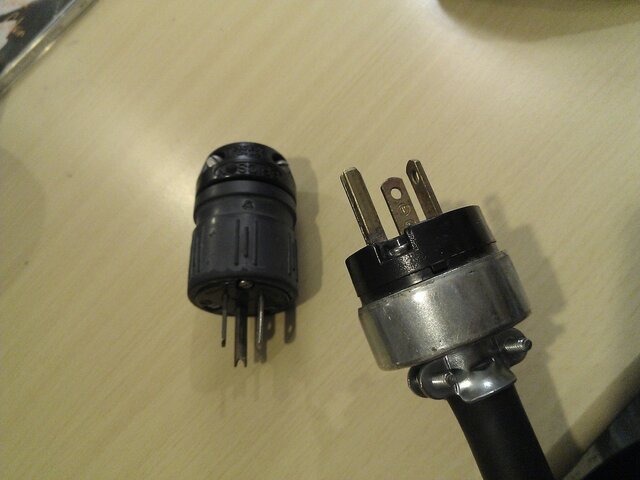
Bat Signal recieved but a search on the website will have revealed earlier topics on this conversation for preferences.
Leviton #5266-CB for 12ga and especially 12/3 SO cable I buy a few hundred of per year. Plus it's all black. The
Hubbell industry standard mostly (Like
Rosco being an industry standard for
gel), don't properly fit 12ga cable and especially not SO grade.
This especially when peple dogmatically screw down the
cord grip as tight as they can get it to a closed condition. Ever cut away at the
cord grip on a 12/3 SJOOW cable at a
cord grip when a "Manufacturer/supplier" does a
Hubbell cord grip?
Cord grip it too tensioned and the
cord grip grips the cable all right in screw tension, but the rubber
insulation about the
cord grip is forced out of the way in doing so. What was once like 1/16" worth of
insulation about conductors, and another on the outer
jacket is now like 1/64" worth of
insulation on outer
jacket and
insulation between conductors. A
bit tight in a way that I have seen by way of flexing the cable at the
plug there has been shorts. Copper conductors cutting
thru insulation at the
cord grip due flexing of the cable at the
cord grip. For a
Leviton above
plug on 12/3 SJOOW cable for instance, I specify 1/16" gap between
cord grip top and bottom assembly for proper
cord grip. A fully screwed down
Hubbell one, that's a problem in the making. You want just ever so much a
bit of wiggle to your
cord grip, a cut away of your tensioning at that
point of tensioning on what you do will best show whats' gripped too much or not enough overall.
Often it's not the
plug, it's the person installing it fault. Also the rattle test is needed overall when pulling cable.
Wire expands and contracts and the higher amperage load
thru it, the more so it does so.
Edison cable, if you shake it's
plug/connectors and they rattle, it's a
clear indication that something inside it is loose and should not be used until fixed. Above, expansion and contraction, perhaps this
plug was once tensioned properly but with use, thrown about the
stage or in the back of a truck, conductors have settled more, and or with expansion and contraction with
current running
thru it, the conductors have settled. You now have loose
wire inside a
plug. The higher the amperage load, the more chance you will see this - 60A
stage pin plugs yearly have to be inspected for instance. A 30A
plug after it's first use certainly is often loose no matter over tightening in torque to compensate. Beyond the
cord grip, often it would seem to someone fixing failed cable that the person installing the
plug didn't tension it enough as often the case with a loose
ground wire, but also often there was other reasons why especially a new cable might not seem to be tensioned sufficiently at the
terminal. Short of pulling all new made cable and redoing all the tension, or pre-testing for each cable under load for a while.. no simple fixes.
Not totally satified with the
Leviton and indeed for 14ga or smaller cable, Hubble might be your brand of choice in better for the amperage
rating cord grip designed for smaller cables. There is lots of reasons to choose a
plug based on
cord grip type, this much less ability of that
plug head to fit
insulation into it's surrounds. Than there is the pulling
thru truss concept. Love the yellow and black Pass and Seymore
plug most in style and
cord grip and options. Square backed don't help if pulling it
thru a bunch of stuff though.
Eagle style metal body type connectors while can be rated for the purpose are fine - them screws catch on everything and often strip out in
cord grip. Than you add a nylock
nut and still while best and easiest to form a
cord grip for, still they hang up on everything and given above people want to see an all plastic
plug - this no matter how insulated, the metal bodied
Edison plug is still frouned upon for use no matter the grade.
Here is a question, and while I have the
receptacle, don't have the
plug. (Saw one but didn't buy it in pre-museum and now lost years later.) What year would a
ceramic "Crows
Foot"
plug date to? What would be it's use?




